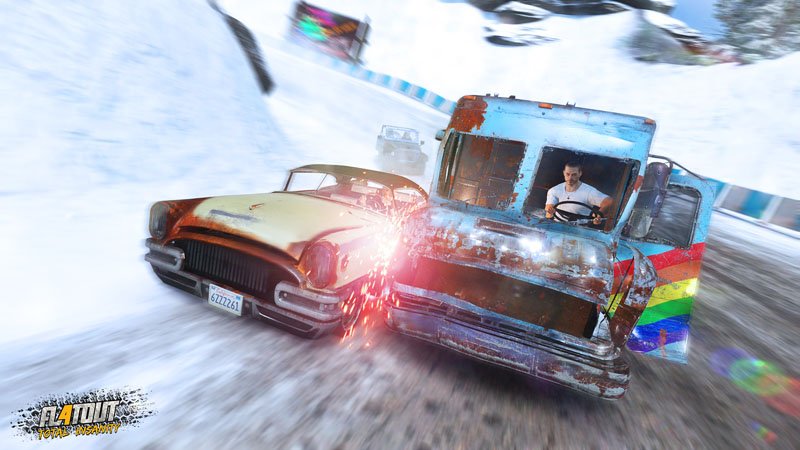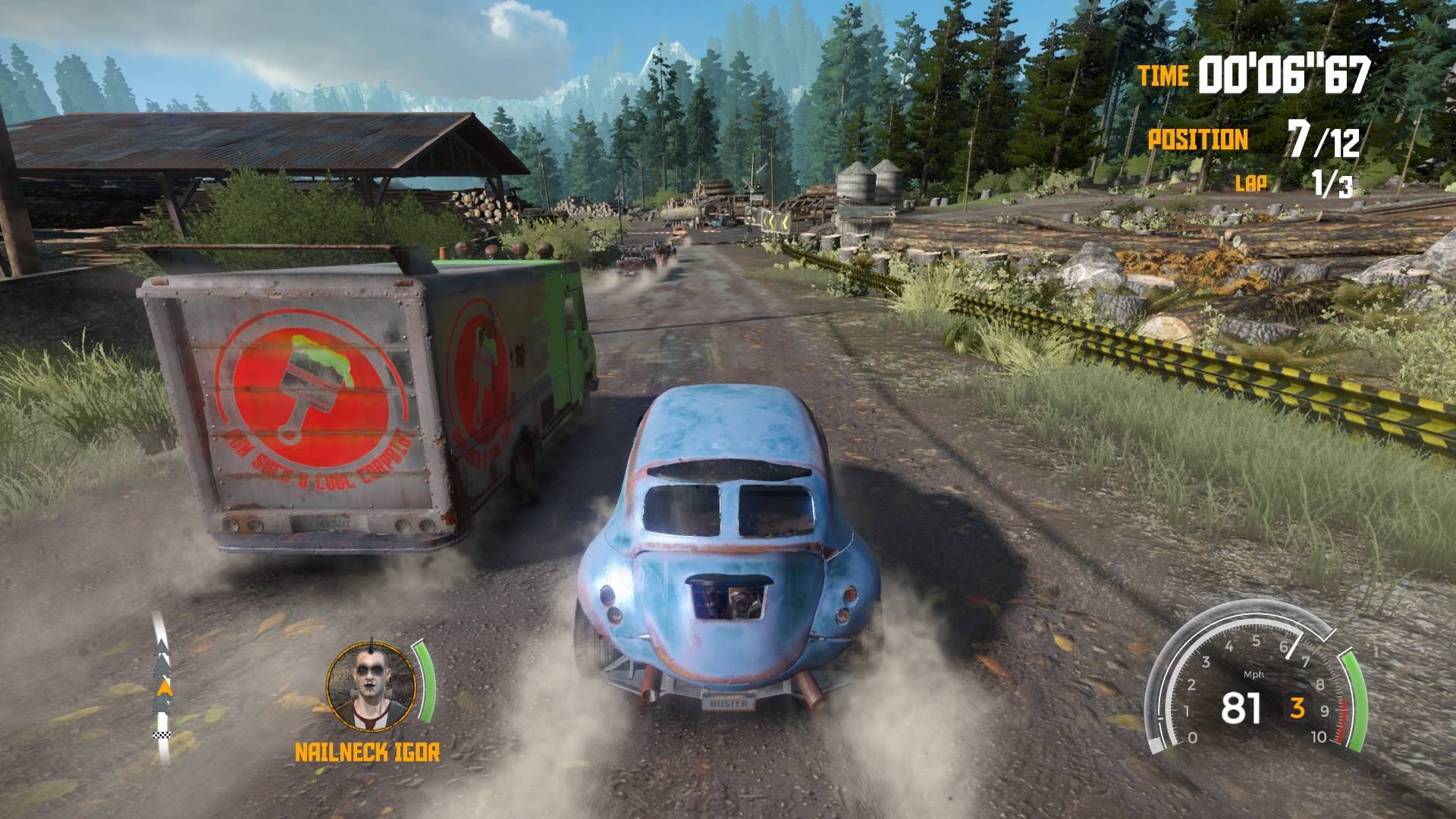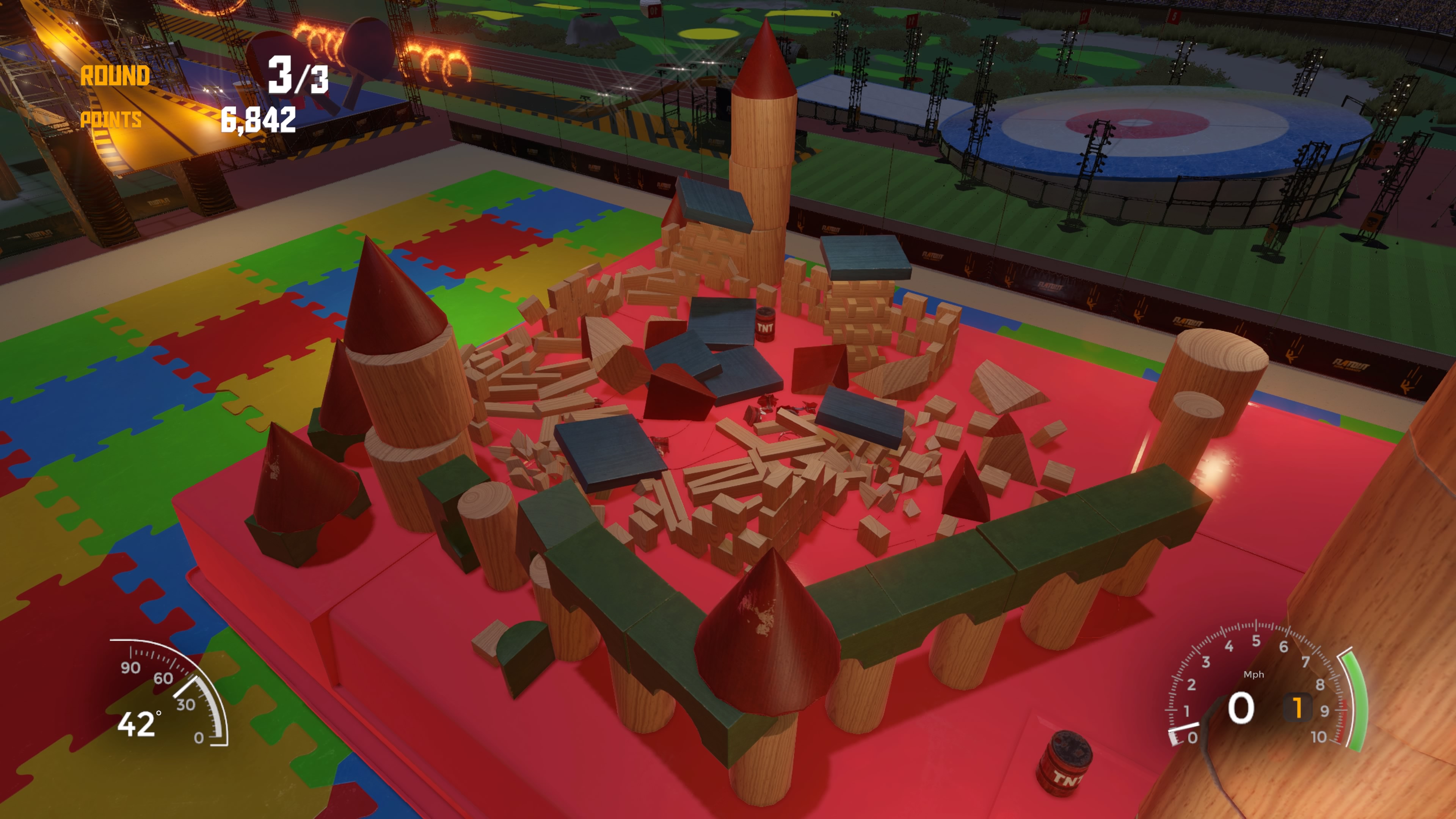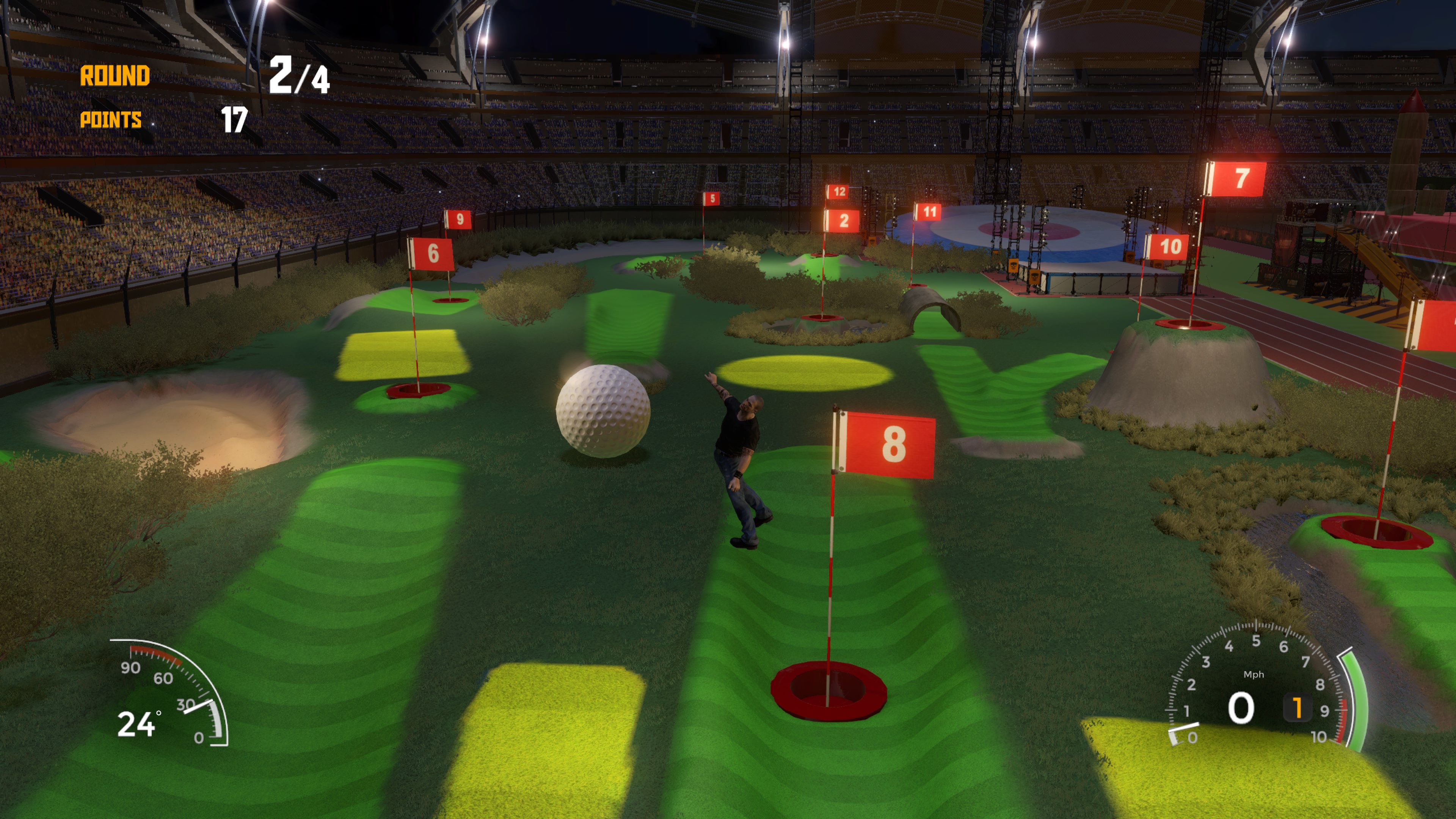Platforms:
Xbox One, PS4, PC
Released:
March 31, 2017
Publisher:
Strategy First
Developer:
Kylotonn
New studio Kylotonn didn’t make it easy on themselves when they choose to revive the FlatOut franchise. For those of you out there unfamiliar with the series, FlatOut is all about car carnage. In the game you’ll find yourself racing rev’d up junk heaps, tricked out rides and radically painted turbo vans. But it’s not all about the race, from taking out other racers in the destruction derby style Arena mode to tossing your driver through the windscreen like the point scoring ragdoll they are in Flatout mode, FlatOut 4: Total Insanity really has no shortage of games types to offer players. So it’s a real shame when I say I wish the gameplay was more enjoyable.
I really wanted FlatOut 4 to be fun and entertaining, which for the most part it delivers on. However after the disaster that was FlatOut 3 back in 2011, it didn’t really have to work too hard to achieve better results.

Upon starting the game you’re given a plethora of exciting looking options. After selecting Career mode you’re instantly thrown into car selection. Normally this would be a simple process, however making the wrong choice here (out of the two cars available mind you) will see you being bounced around the track like a pin ball by the A.I. for the first few races until you sufficiently upgrade your rust bucket. This alone can seem like a bit of an effort with the initial rewards for race completion being a bit on the pitiful side.
Comprising of 3 race types, Derby, Classic and Allstar Cup with 3 tiers of difficulty each, you’ll spend roughly 15 or so minutes completing each cup depending on the number of tracks it contains. There are 20 tracks available however they all take place over the same 4 or 5 environments and begin to quickly feel stale and repetitive. Also don’t be expecting any sort of tutorial or guidance from the game at this point on how to play either; you’re basically thrown right into the action left to figure it all out on your own.
“…you’re encouraged to barge into other vehicles as well as the destructible scenery.”
Once you start to get to grips with the game you’ll quickly figure out what sets FlatOut apart from other racers, reminiscent of the popular Burnout series. Unlike normal racers where the objective is to normally avoid hitting other racers and objects, you’re encouraged to barge into other vehicles as well as the destructible scenery. Doing so will fill up your nitro boost meter which when activated will hurtle you along at a blistering and often uncontrollable pace. While there’s no shortage of destructible items to be driven through, it’s not always clear what can and can’t be, which can lead to some spectacular crashes.
FlatOut 4’s second main mode is its FlatOut game mode. Featuring 42 solo challenges for you to elevate your boredom with, it too suffers from a much needed lack of guidance and instruction. Whilst offering more than the career mode, it still falls vastly short of giving you enough information to help you figure out what you’re attempting in each challenge right off the bat. Still, the mix of stunt and race events on offer are good fun once you figure out what you’re doing and it’s always enjoyable watching your driver go flying like a rag doll into some TNT!

You could argue it’s this exact rag doll physics premise that has made the FlatOut franchise one gamers continue to want. When the original FlatOut first released back in 2004, it quickly became quite the hot topic. This wasn’t because of its great racing, or the way the game offered players the ability of course destructibility (a relatively new feature at the time), but because of the jolting way the game would fling the driver through the windscreen like a crash test dummy, every time you ploughed the car into an obstacle. Even though this was hilarious to watch (as you could semi-control the unfortunate driver’s trajectory as their rag doll body soared through the air before plummeting to their inevitable death) some people were outraged. Nowadays this feature is common place and it wouldn’t be a FlatOut game without out it.
Of all of the game modes on offer with FlatOut 4, it’s the multiplayer that is the shining light at the end of a rather uneventful tunnel. The online multiplayer is extremely customisable, offering a fun and surprisingly lag-free experience. The host is able to set up the matches quite easily and the game types themselves are quite good; there’s even battle and carnage modes which adds weapons to the track for added chaos, point scoring and opponent take-downs. Included in this redemption is Party mode or the Stunt Arena which allows you to take on 12 fun stunt tracks on local multiplayer with friends all using the one controller. This saving grace has been the absolute highlight of my FlatOut 4 playing experience and I have to say if you’re in the market or keen to pick up this game then this will be your go-to modes.
Positive:
- Destructive environments
- Ragdoll physics
- Multiplayer is tonnes of fun
Negative:
- Frustrating and overly sensitive physics
- Repetitive career mode
- Race rewards are stingy
- Almost no instruction or tutorials
In the end FlatOut 4: Total Insanity is let down by its repetitive career mode and lack of instruction. It’s somewhat generic characters and overused environments seem dated in comparison to other games these days but overall it is a game salvaged by its multiplayer experience. As it is, FlatOut 4 is an uneven mix of fun and frustration, at times offering players as much pain as it inflicts on its doomed crash test dummy of a driver!





















